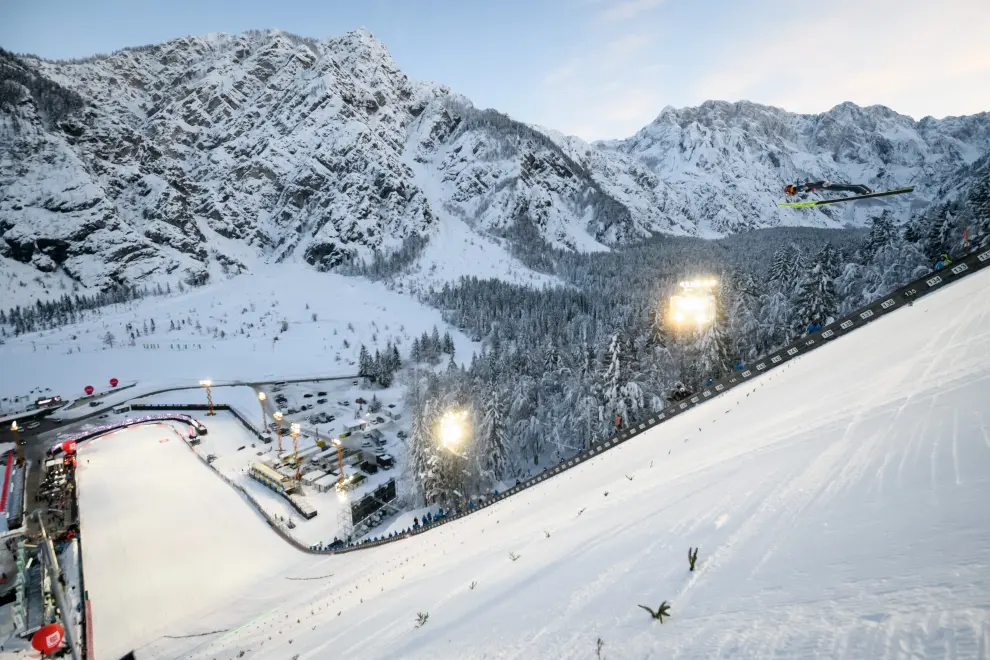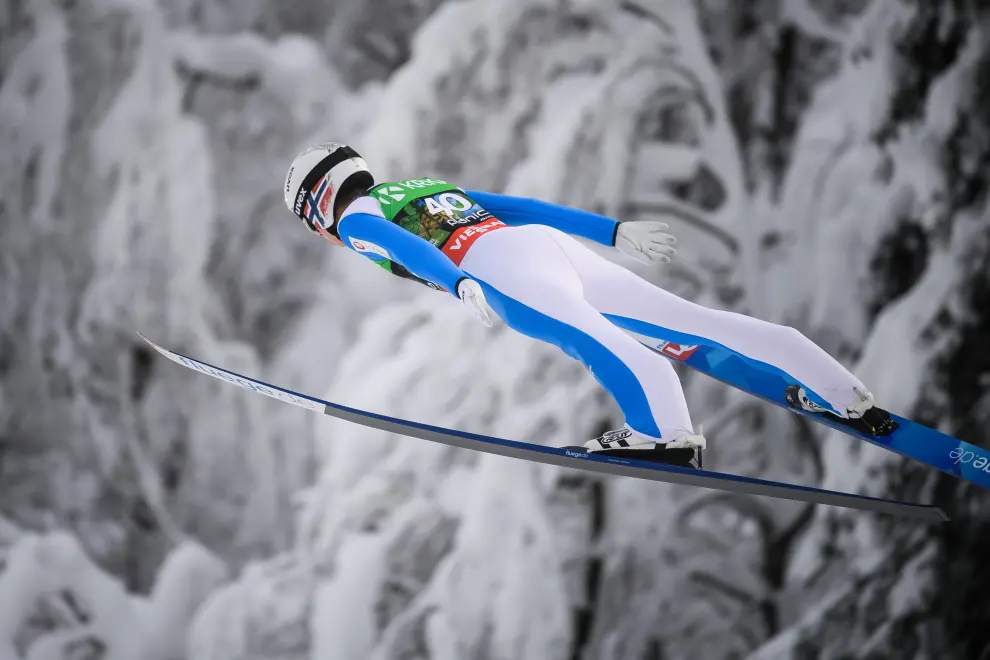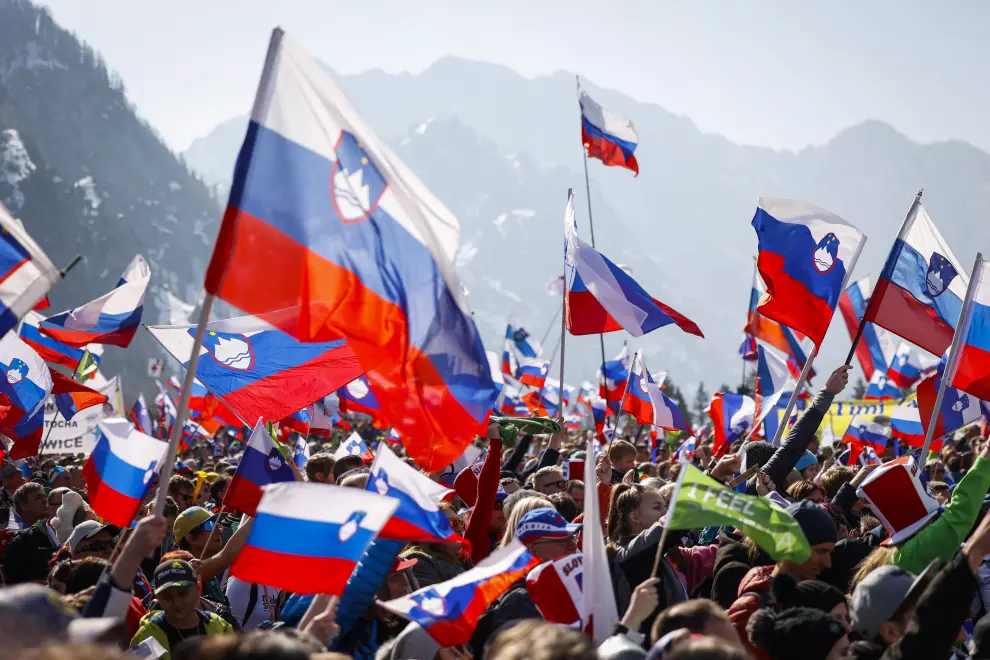Planica, a site of mythic proportions
Planica, an Alpine valley in Slovenia best known for its gigantic ski flying hill and home to a state-of-the art Nordic centre since 2015, is ready for the biggest sports event in the country's history. The Nordic World Ski Championships will take place at a site that has long been a source of national pride and a massive crowd magnet.
The Snow Queen
The Planica Nordic Centre in the north-west of the country will host over 2,000 of the world's best ski jumpers, cross country skiers and Nordic combined specialists from more than 60 countries between 21 February and 5 March. Expectations, not only in a sporting sense, are running high, as the venue has acquired almost mythical status in Slovenia and beyond.
Set in a protected glacial valley in the northern part of the Julian Alps, Planica is lovingly referred to as the Snow Queen. Its annual Ski Flying World Cup meet is always a spectacle, an occasion to celebrate sport and set aside divisions.
Planica is considered a national symbol, featuring prominently in stamp collections and even celebrated with its very own anthem. Composed and recorded for the occasion of the 1979 Ski Flying World Championship by the world famous oompah music ensemble Avsenik Brothers, "Planica, Planica" is played each time a jumper beats the 215-metre mark.

Planica Giant Hill. Photo: STA
Ski flying galore
The causes for the venue's special status include the location's breathtaking scenery, Slovenia's consistently successful ski jumpers, and the acclaimed engineers who helped turn Planica into the arguably most spectacular ski jumping venue in the world.
What is now a modern EUR 48 million Nordic skiing complex, which features a ski flying hill, seven ski jumping hills and 40 kilometres of cross-country tracks, emerged from the very roots of ski jumping in Slovenia and in the world in general, as the first hill was constructed in Planica in 1932.
Slovenian engineer Stanko Bloudek (1890-1959) designed and built a larger hill in 1934, known as the Bloudek Giant, which became in 1936 the venue of the first-ever jump passing 100 metres. The core of the present-day venue is the Gorišek ski flying hill, constructed in 1969 by the brothers Vlado and Janez Gorišek.
Renovated in 2012 and now under state protection as a national monument, it has has been one of the world's leading ski flying hills in terms of the number of records set. It saw the first ever 200 metre-plus flight in history in 1994, while the hill's present record stands at 252 metres.

Norway's Halvor Egner Granerud flying in Planica. Photo: STA
Planica lost its quarter of a century-long status as the world's biggest sky flying hill in 2011 to Norway's Vikersund, after the hill there was redesigned by none other than one of Planica's engineers, Janez Gorišek and his son. Vikersund currently holds the world record with 253.5 metres, courtesy of Austria's Stefan Kraft.
"There was a time when 100 metres was the magic mark, but I imagined flights over 200 metres... My intuition meanwhile continues to guide me towards developing a ski flying hill that would allow for safe flights of up to 300 metres," Janez Gorišek, 89, has recently said.
Slovenian athletes and huge crowds flying high
Meanwhile, Slovenia's ski jumpers, including in the ever more popular women's competitions, have had another excellent season, while the country's cross-country skiers have made a name for themselves in the past decade as well, which means a lively atmosphere is guaranteed at the championships.
Some will argue that matters even got too lively occasionally in Planica in the past, but things have been evolving more in the direction of family fun in the last two decades after alcohol was banned from sports events by legislation.

Supporters wave Slovenian flags in Planica. Photo: STA
Planica has traditionally had the honour of wrapping up the Ski Jumping World Cup season in March each year with multi-day events and has often been a prime example of a positive feedback loop between large supporting crowds and the home athletes' success. Last year, Slovenia's jumpers - only the men are competing on the flying hill - recorded the first ever quadruple victory in the history of the sport.
The turnout by fans has been enormous, the record for single-day as well as three-day attendance being set in 1985 with 80,000 and 150,000 spectators respectively. The 100,000 figure was reached on several more occasions, including in 2016 when Slovenia's Peter Prevc won the overall Ski Jumping World Cup.
Organisers expect up to 200,000 spectators in total during the two weeks of competition. Public transport is being organised and encouraged as part of efforts to protect the environment, with visitors also needing to brave the final 1.5 kilometres to the Nordic Centre on foot. It is as yet unclear whether this will also apply for the heads of state and government and crowned heads that are expected at the championships as well.


